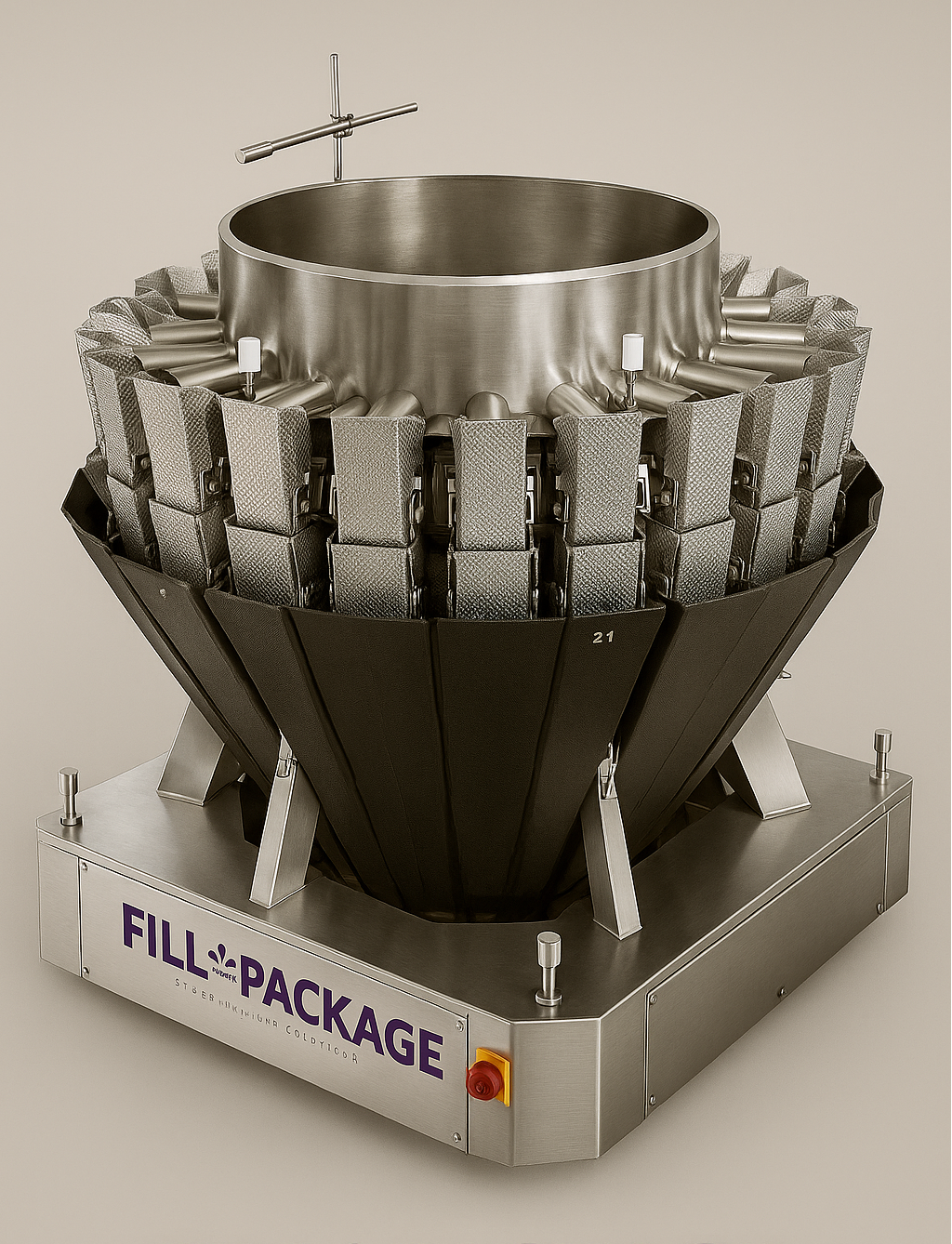Screw feeder multihead weighers are critical components in modern food packaging lines, especially when dealing with sticky, fragile, or granular products. They deliver high precision and consistent product handling, which ensures accurate packaging and minimal waste. However, as with any complex machinery, they require regular maintenance to remain efficient.
This guide provides actionable maintenance strategies and a structured schedule to keep your screw feeder weighing machine in peak condition.
👉 Whether you’re a food manufacturer or distributor, following a proactive maintenance routine prevents downtime, safeguards product quality, and maximizes your investment.

Understanding the Machine: Key Parts and Functions
A screw feeder multihead weigher utilizes rotating screw mechanisms to transport products from a central feed point into individual weigh hoppers. This system is ideal for semi-flowing products, such as powders, minced meats, and sticky pastes—materials that typically cause clogging or damage in vibratory systems.
🔍 Main Components:
- Screw feeders for controlled feeding
- Hoppers (feed, weigh, and discharge types)
- Load cells for precise measurement
- Actuators and motors for motion
- Control unit/HMI that oversees operations
Understanding each of these parts enables teams to diagnose issues faster and schedule targeted inspections.
🗓️ Maintenance Schedule: What to Do and When
To maintain machine performance and avoid unexpected breakdowns, follow this recommended maintenance schedule. Adjust it based on your usage intensity and environmental conditions.
| Frequency | Task | Description |
|---|---|---|
| Daily | Cleaning | Wipe down screws, hoppers, and all product-contact surfaces with food-safe detergent. |
| Inspection | Check for loose screws, damaged wiring, or debris in the weighing area. | |
| Calibration | Test weight accuracy using standard certified weights at the start of each shift. | |
| Weekly | Lubrication | Apply manufacturer-approved lubricant to screws, gears, and bearings. |
| Tightening | Secure bolts and fasteners loosened by vibration. | |
| Electrical Inspection | Examine wiring and ensure connections are secure and undamaged. | |
| Monthly | Deep Cleaning | Disassemble feeder pans and clean hidden areas. Remove buildup or residue. |
| Component Check | Inspect screw surfaces, actuators, and buckets for signs of wear. | |
| Software Updates | Confirm the latest firmware is installed. Contact the manufacturer if needed. | |
| Annually | Professional Service | Arrange for a full inspection and part replacement by certified technicians. |
| Performance Test | Use test weights to evaluate speed, accuracy, and consistency. | |
| Operator Training | Provide refresher training on maintenance and new software features. |
Common Issues and How to Fix Them
Understanding the most frequent machine faults helps reduce downtime and repair costs.
1. Screw Jamming or Stiff Movement
This often occurs due to foreign objects, lack of lubrication, or screw wear.
Solution:
Start by inspecting the screw and nut assembly. Clean all internal parts thoroughly and reapply lubricant. If jamming continues, inspect the motor and bearings for hidden faults.
2. Inaccurate Weighing – Follow These 5 Steps
This is the most common user complaint. Use the steps below for quick troubleshooting:
- Clear the area: Check for product residue or objects blocking the weighing mechanism.
- Manual calibration: Use standard weights and recalibrate through the HMI.
- Hopper position check: Ensure buckets aren’t touching anything other than the designated sensors.
- Clean sensors: Dust, static, or EMI can interfere with accuracy—especially in dry winter air.
- Sensor health check: Look for overload, impact damage, or malfunction. Replace damaged load cells as needed.
If these steps don’t resolve the issue, consult technical support immediately.
3. Excessive Vibration
Abnormal vibrations can be caused by installation issues or part degradation.
Solution:
Make sure the machine is on a level surface. Check for worn-out screws, misaligned feeders, or faulty vibrators.
💡 Best Practices to Maximize Performance
In addition to your regular schedule, implement these habits to ensure long-term success:
- Follow the official manual — every machine model has unique requirements.
- Always use genuine parts — OEM components prevent long-term compatibility issues.
- Train staff consistently — skilled operators reduce misuse and catch early signs of failure.
- Keep your environment clean — dust and debris can cause internal damage or interference.
- Document everything — track repairs, calibrations, and replacements for traceability.
- Standardize lubrication checks — don’t delay lubrication. Set reminders and track frequency.
- Test accuracy regularly — even auto-calibrating systems can drift over time.
- Call experts when needed — don’t gamble with advanced electronics or sensors.
Conclusion: Protecting Your Equipment Investment
Routine maintenance isn’t just a checklist—it’s an essential part of operational success. Without it, performance drops, breakdowns increase, and compliance becomes harder.
🧰 Why Maintenance Matters:
- It ensures accurate, safe, and clean packaging
- It reduces unexpected downtime
- It improves equipment lifespan and ROI
By training your team, following a consistent schedule, and acting early when issues arise, you’ll keep your screw feeder multihead weigher performing like new.

